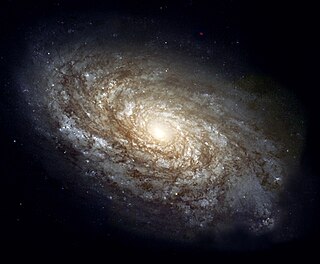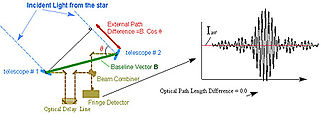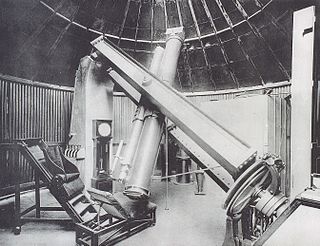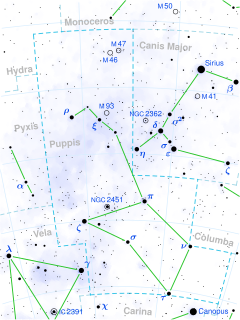The Millennium Star Atlas was constructed as a collaboration between a team at Sky & Telescope led by Roger Sinnott, and the European Space Agency's Hipparcos project, led by Michael Perryman. This 1997 work was the first sky atlas to include the Hipparcos and Tycho Catalogue data, extending earlier undertakings in terms of completeness and uniformity to a magnitude limit of around 10–11 magnitude. It appeared as a stand-alone publication, [1] and as three volumes of the 17-volume Hipparcos Catalogue .

Sky & Telescope (S&T) is a monthly American magazine covering all aspects of amateur astronomy, including the following:

Hipparcos was a scientific satellite of the European Space Agency (ESA), launched in 1989 and operated until 1993. It was the first space experiment devoted to precision astrometry, the accurate measurement of the positions of celestial objects on the sky. This permitted the accurate determination of proper motions and parallaxes of stars, allowing a determination of their distance and tangential velocity. When combined with radial velocity measurements from spectroscopy, this pinpointed all six quantities needed to determine the motion of stars. The resulting Hipparcos Catalogue, a high-precision catalogue of more than 118,200 stars, was published in 1997. The lower-precision Tycho Catalogue of more than a million stars was published at the same time, while the enhanced Tycho-2 Catalogue of 2.5 million stars was published in 2000. Hipparcos' follow-up mission, Gaia, was launched in 2013.
Michael Perryman is a British astronomer, known for his work leading the Hipparcos and Gaia space astrometric projects.
The 1548 charts include one million stars from the Hipparcos and Tycho-1 Catalogues, three times as many as in any previous all-sky atlas; more than 8000 galaxies with their orientation; outlines of many bright and dark nebulae; the location of many open and globular clusters; and some 250 of the brightest quasars. The non-stellar objects in the atlas are identified by type and designation. The chart scale is 100 arcsec/mm, matching that at the focus of an 8-inch f/10 Schmidt-Cassegrain. Star magnitudes are essentially Johnson V. Distance labels are given for stars within 200 light-years of the Sun. Proper motion arrows are given for stars with motions exceeding 0.2 arcsec/yr. Variable stars are indicated by amplitude and variability type. Many thousands of already known and newly discovered double stars are depicted with tick marks indicating separation and position angle.

A star is type of astronomical object consisting of a luminous spheroid of plasma held together by its own gravity. The nearest star to Earth is the Sun. Many other stars are visible to the naked eye from Earth during the night, appearing as a multitude of fixed luminous points in the sky due to their immense distance from Earth. Historically, the most prominent stars were grouped into constellations and asterisms, the brightest of which gained proper names. Astronomers have assembled star catalogues that identify the known stars and provide standardized stellar designations. However, most of the estimated 300 sextillion (3×1023) stars in the Universe are invisible to the naked eye from Earth, including all stars outside our galaxy, the Milky Way.

A galaxy is a gravitationally bound system of stars, stellar remnants, interstellar gas, dust, and dark matter. The word galaxy is derived from the Greek galaxias (γαλαξίας), literally "milky", a reference to the Milky Way. Galaxies range in size from dwarfs with just a few hundred million stars to giants with one hundred trillion stars, each orbiting its galaxy's center of mass.

A dark nebula or absorption nebula is a type of interstellar cloud that is so dense that it obscures the light from objects behind it, such as background stars and emission or reflection nebulae. The extinction of the light is caused by interstellar dust grains located in the coldest, densest parts of larger molecular clouds. Clusters and large complexes of dark nebulae are associated with Giant Molecular Clouds. Isolated small dark nebulae are called Bok globules. Like other interstellar dust or material, things it obscures are only visible using radio waves in radio astronomy or infrared in infrared astronomy.
Other major celestial atlases since 1997 have also incorporated the Hipparcos and Tycho Catalogue data. These include Sky Atlas 2000.0 (2nd edition to 8.5 mag), [2] the Cambridge Star Atlas (3rd edition to 6.5 mag), [3] Uranometria 2000.0 (2nd edition to 9.7 mag), [4] the Bright Star Atlas 2000.0 (to 6.5 mag), [5] and the Pocket Sky Atlas (to 7.6 mag). [6]










